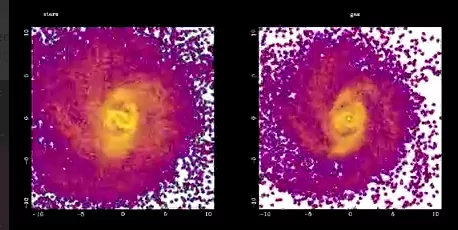A new study based on observations of the James Webb Space Telescope suggests a new look at the evolution of galaxies. As part of an early program to study distant galaxies, the observatory discovered well-structured spiral galaxies at a time when they should not have formed yet, if existing models are followed.
Jumpers were observed for the first time in such young spiral galaxies. Their presence may lead to a revision of stellar evolution, since the jumpers structurally have a strong influence on the processes of star formation and gas distribution inside galaxies.
